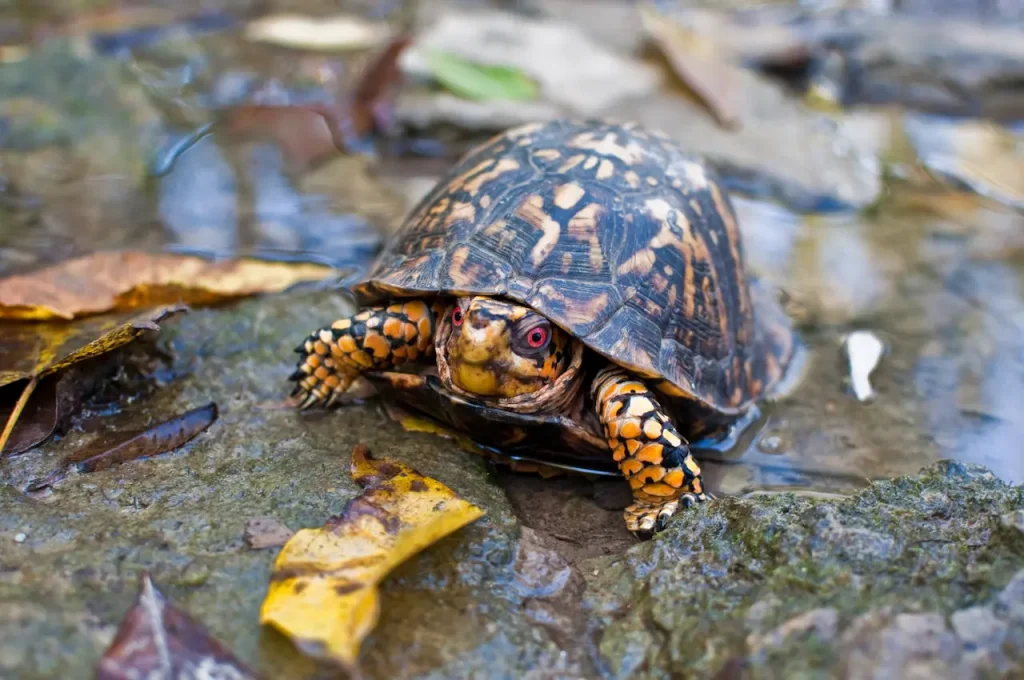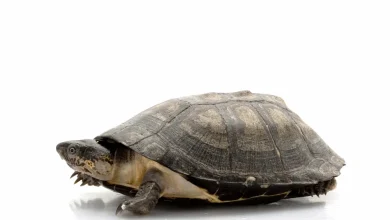Box turtles are quite fragile in captivity. They have a strong connection to the location where they are born, rarely travelling far from it. Being taken from their home can be a stressful experience if their every need is not met. Many box turtles live only a fourth as long in captivity due to stress and not getting all of their essential needs met. It’s important you know how to care for them.

The Enclosure
The first thing you should worry about is building an enclosure for your turtle. This should be taken care of before you even bring your new friend home.
Your first choice is whether to build it inside or outside. Box turtles tend to be happier in an outdoor enclosure, and will be healthier with the constant supply of sunlight (if you keep your turtle indoors, you should still take them outside to get some sun for an hour or two each day). But on the other hand, indoor enclosures offer you better control over the temperature. You have to live in an area that is relatively warm year round for an outdoor enclosure to be an option. A good rule of thumb is to find out if the box turtle you’re caring for is native to the region you live. If there are wild specimens of the breed you own living in the area, then an outdoor enclosure should be fine.
You should have a heating lamp that offers warmth to your turtle. Reptiles are cold blooded and cannot regulate their own body heat. This lamp should be kept to one side of the enclosure so they can move closer to it or further away from it as needed.
There are a few other things you need that play a role in their body heat. One such example is water. They obviously need clean drinking water the same as any pet. But box turtles like to soak from time to time to rehydrate and cool down, so you will need a body of water that is large but shallow. On the subject of water; you will also need to mist their home several times daily with a spray bottle, to keep the humidity level high.
Turtles can also cool themselves off by moving into shade or burrowing into the ground. You should have plenty of places for your turtle to hide. Not only do they like the shade, but they also need their privacy; even more than their shell provides. You should have things like half-logs and brush for them to hide in, and a soft material that they can burrow into.
Overall, you should have things in the enclosure that makes it look like they’re living outside.
You can also add rocks large for them to climb on, but relatively flat. Climbing on this rock will help them file down their claws.
Make sure that you have walls your turtle cannot see through. Turtles cannot grasp the concept of glass and clear plastic. They will endlessly press up against it, trying to move through the unseen wall with stressful results. This is like torture for a box turtle, so make sure they can’t see anything beyond the walls of their home.
If the enclosure is outside, make sure the walls go a good foot underground. Box turtles are skilled diggers and may pull a daring escape if your walls aren’t deep enough.
An outdoor enclosure should have some kind of wire mesh over the top of it. This will allow sunlight to come through, but not pesky creatures that may otherwise disturb your turtle.
The enclosure should be large enough to allow them some exploration.

Their Diet
Box turtles are omnivores, meaning they eat both plant matter and animal protein. You need to keep their diet at a healthy balance of both meat and vegetables. Many experts say that a good balance is at about 60% animal protein and 40% plant matter.
For meat, box turtles mostly eat insects in the wild. You can buy various feeder insects at most local pet stores such as crickets, worms, and grubs. Some people also feed their pet box turtles feeder mice. Normal sized mice are too big for a box turtle, but pet stores keep frozen baby mice as a food option for small reptile that cannot eat adult mice. You can thaw these out, and give them to your turtle. Some turtles like to hunt, and others prefer to be fed pre killed food. It will require some experimentation on your part to see what your turtle likes.
For plant matter, your turtle will like greens and fruits. Lettuce is a common option when feeding a box turtle. They love fruits like straw berries, but don’t spoil them with too many treats. Make sure they’re getting plenty of greens and protein.
As mentioned earlier, box turtles also need lots of clean water. The water supply should be changed daily.
Other Notes
An important thing to keep in mind is regular visits to the veterinarian. Most people think of dogs and cats when they think of the vet. But reptiles can benefit from regular checkups, too; perhaps even more so, as reptiles don’t show as many outward signs when they’re sick as a mammal would. Not only are they not great at expressing emotions outwardly, but they are also not as domesticated as dogs or cats, and maintain a natural instinct that if they’re sick, they keep it to themselves, so as not to look like easy prey. Consider taking them in at least every six months for a checkup.
If you’re going to have more than one box turtle, remember to keep the males separate. They can become very aggressive over food, females, and territory. Even turtles that get along may snap at each other when feeding from the same area, so make sure you feed them one at a time.



